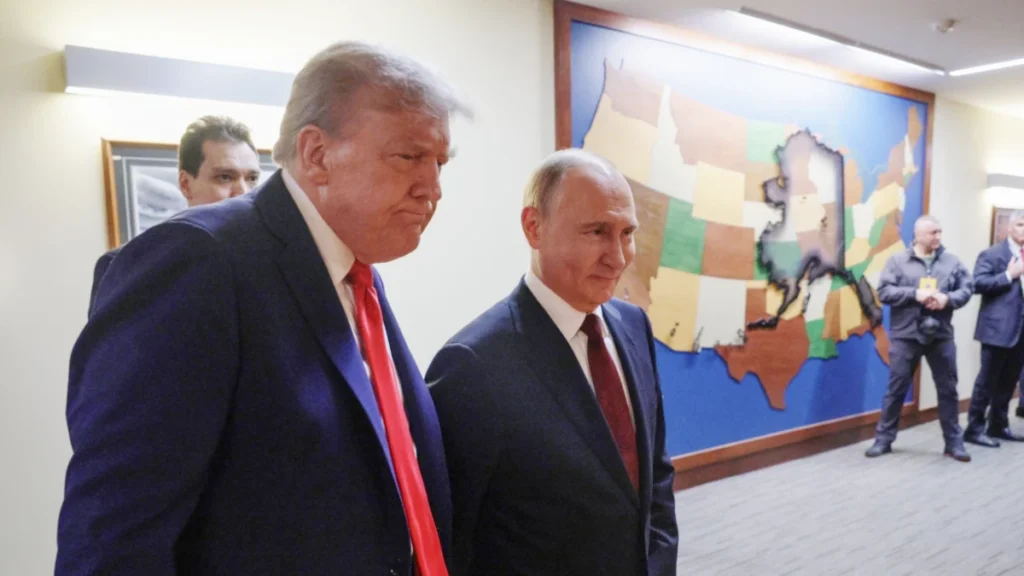The transport corridor between Armenia and Azerbaijan, which will be placed under U.S. management, could become part of a trade route between China and Europe—if Washington does not restrict its use, Bloomberg reported, citing unnamed Turkish officials.
According to them, the exclusive right to manage the corridor would allow the United States to determine how it is used. Therefore, much will depend on Washington’s position as to whether major exporters, including China, will be able to establish trade routes through it. Sources emphasize that Türkiye sees significant potential in using this corridor to expand trade links between China and Europe.
Will the United States prevent China from taking advantage of the opportunities of the Zangezur Corridor (the “Trump Route”). This question emerged after an agreement was reached in Washington on August 8 regarding communications between mainland Azerbaijan and the Nakhchivan Autonomous Republic. The transport and logistics corridor was officially named the “Trump Route for International Peace and Prosperity” and handed over by Armenia to U.S. management for 99 years.

Source: https://journal-neo.su/
The question about China is not accidental. First, it stems from the difficult relations between Washington and Beijing and repeated U.S. attempts to constrain its competitor’s actions. Second, all logistics along the East–West axis—and their effectiveness in particular—depend on China. Denying Beijing free access to this corridor would strip the project of its very meaning.
China is the starting point of the Middle Corridor, or the Trans-Caspian International Transport Route (TITR). It is the main exporter along this route, the principal investor in infrastructure projects for many countries situated along the Middle Corridor, and the largest supplier of goods. There is not a single country from China’s borders to Europe’s frontiers that would not wish to benefit from the transit of Chinese exports.
China’s geographical position in eastern Eurasia makes it the natural starting point for westward routes to Europe. Without China, the Middle Corridor could not fulfill its role of connecting Asian and European markets, since the majority of goods moving along this route originate in China. One does not need to be a logistics expert to grasp this.
The very idea of the East–West corridor emerged thanks to China. These new lines of communication became necessary for the world’s second-largest economy, which had acquired the capacity to open fresh routes for delivering its goods to foreign markets. The Middle Corridor became the centerpiece of this East–West initiative.
Chinese expert Einar Tangen told STEM that China views the Zangezur Corridor through the prism of its potential to expand regional connectivity and facilitate trade flows. “In the context of the Belt and Road Initiative (BRI), and particularly the Middle Corridor, this route could play an important role in creating an alternative land bridge between Asia and Europe, bypassing congested and unstable directions. Its successful implementation could significantly reduce delivery times, cut logistics costs, and enhance economic interdependence between the countries of the region,” the expert stressed.

Einar Tangen/CGTN
From an economic standpoint, he added, the route appears highly promising.
It is worth noting that in 2024, a total of 287 block trains were dispatched from China via the Middle Corridor, of which the “Trump Route” is a part. In the first six months of this year alone, 199 block trains have already been sent, with the total expected to surpass 400 by the end of the year.
China is the world’s leading producer of most industrial goods—including consumer goods, household appliances, textiles, and electronics—while also being the largest exporter and one of the most important consumer markets globally. The country exports goods worth over USD 3.3 trillion annually, making it a world leader in global supply chains.
China has earned the title of the “world’s factory” thanks to its vast production capacities and dominant positions across multiple industrial sectors. Beijing has invested heavily in developing powerful manufacturing and logistics infrastructure, enabling efficient production and export. Moreover, the country’s development strategy is built on constant, determined, and relentless forward movement.
Given these characteristics, it is difficult to imagine the effectiveness of any Europe–Asia transport corridor without China’s active participation. Despite his unpredictability, Donald Trump is first and foremost a successful businessman, and in business—unlike in politics—forecasts are based on numbers, not words. If the United States, as planned, invests in the Zangezur Corridor, it will hardly undermine its own project. It does not take an economist to see that without China, this route would become nothing more than a railway to carry goods from mainland Azerbaijan to Nakhchivan. From the perspective of international transit, it would be practically useless.

Workers are seen at a site as Türkiye breaks ground for the Kars-Iğdır-Aralık-Dilucu railway line, Kars, northeastern Türkiye, Aug. 22, 2025. (AA Photo)
The conclusion is clear: Trump will not restrict China from using the new corridor. On the contrary, he is likely to create all the necessary conditions to divert Chinese cargo flows from competing routes onto this one.
And even if frictions emerge, Beijing will not be left stranded. The Middle Corridor is already functioning across the South Caucasus, with a slightly longer path through Georgia. That alternative may not be the shortest, but it has the advantages of stability, predictability, and insulation from political gamesmanship.
In the final analysis, Washington’s ambitions and Beijing’s global economic role intersect in the “Trump Route.” Blocking China would mean sabotaging the very viability of the project the U.S. seeks to control. Allowing China in would mean embedding American influence into one of the most dynamic arteries of Eurasian trade. That is the paradox of the corridor: it cannot work without China, yet it will never escape the political shadow of the United States. The true question is not whether Trump will restrict China, but whether Washington is ready to accept that the road to Europe inevitably begins in Beijing.
By Tural Heybatov







